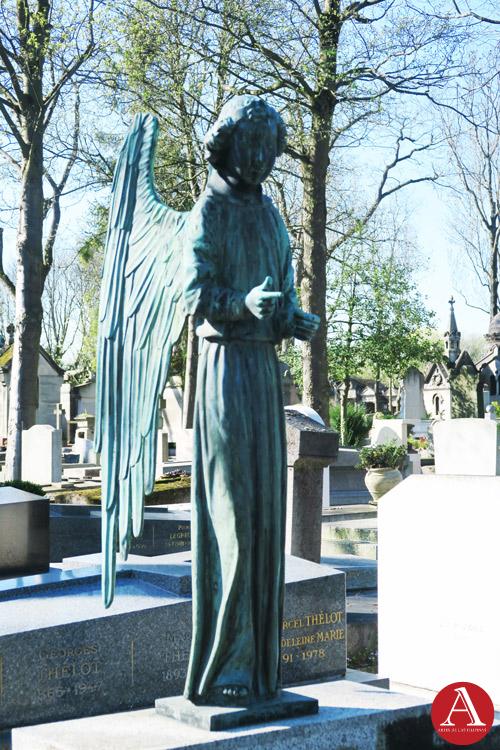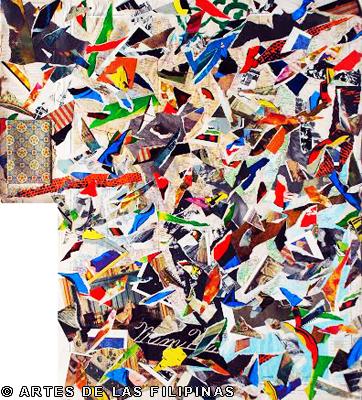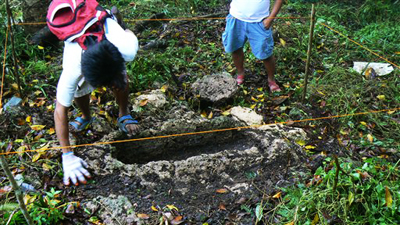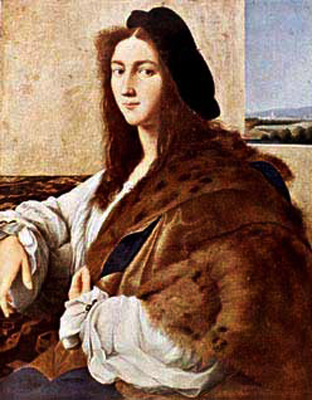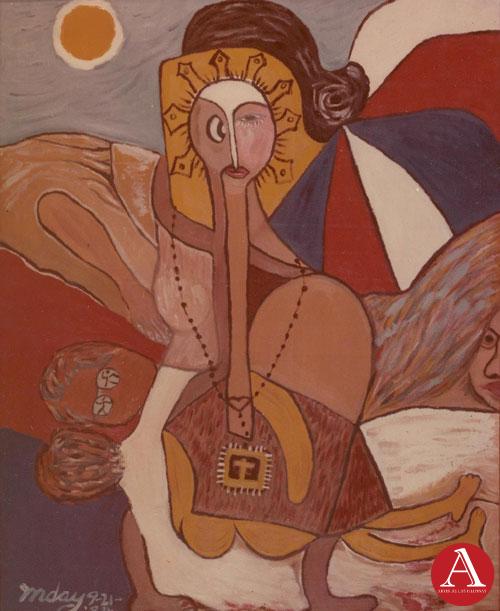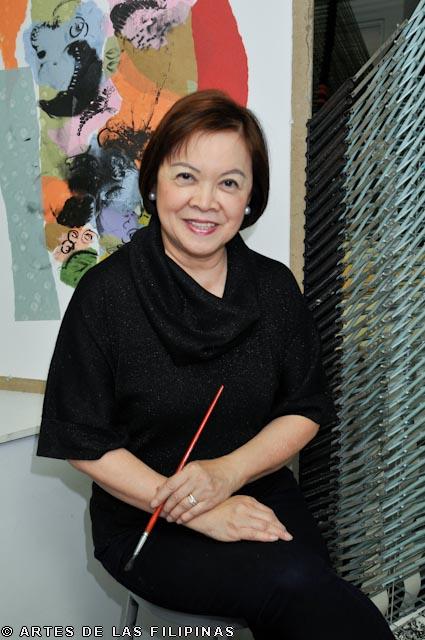
Lenore Lim’s Liberation of Colors
by: Christiane L. de la Paz
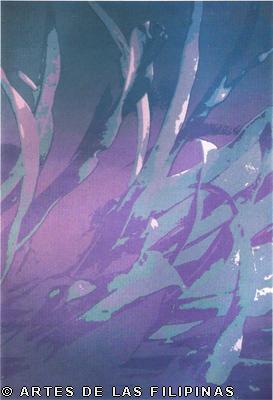
1992
You graduated from the UP College of Fine Arts in 1967. Tell us about your student life during those times.
I had an older sister who was already a third year student at the College of Business Administration. My sister was part of the UP Mobile Theater with Leon Ma. Guerrero as director. I chaperoned her when they had plays in the different provinces. She was also a member of the UP Student Catholic Action. I already had friends at UP when I entered as a freshman.
Having studied from Grade 1 up to High School at the Holy Ghost College, it was just natural for me to join the UPSCA. My activities were mostly related to UPSCA in the first two years. I felt comfortable from the first day because I already had my sister’s friends who were looking after me and making sure I was fine. We had the UPSCA Drama committee and we produced “The Diary of Ann Frank.” It was a good experience for me working with many of the students from the Speech and Drama Department. LinoBrocka was the director and Cecile Gordon was Ann Frank.
In my junior and senior years, I got more involved with the College of Architecture and Fine Arts (CAFA) Student Council.The CAFA was only one college at that time. In my Junior year, I was secretary of the Student Council and in my senior year, I became the President. The CAFA Singers won a singing contest and we in the Student Council decided to hold a CAFA Singers in Concert at the Abelardo Hall. It was a big hit in the campus and the CAFA Singers gained prominence in the Manila music scene. They became a regular guest of PilitaCorales’ TV show, “An Evening with Pilita” and the Nelda Navarro show.
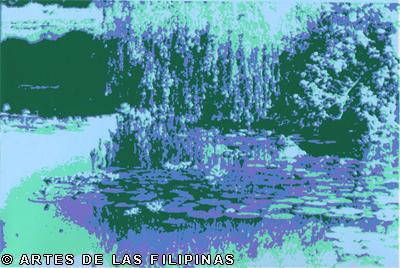
Serenity
1992
What made you decide to study fine arts?
In high school, I was inspired by Sr. Araceli of the College of the Holy Spirit who gave me free art lessons on Saturday mornings. My father reinforced my interest in the arts when he first bought me an art booklet from the Department of Education.
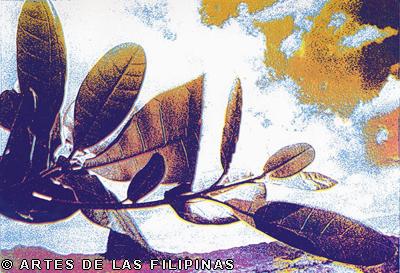
Sylvanscape
1992
Who are your contemporaries?
At UP, there were AdiBaens Santos, Jess Abrera, Lulu Coching, Nik Ricio, Mar Bongalon, Fred Liongoren, Jaime de Guzman and Jun Yee.
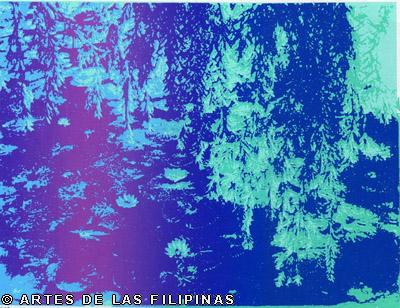
Weeping Willow
1992
Who are your professors during those times?
Jose Joya, Napoleon Abueva, Larry Alcala, Carlos Valino, Federico Alcuaz, Virginia Agbayani.
What did you learn from each one of them?
Joya – composition, Abueva – sculpture, Valino – figure drawing, Alcuaz – landscape and Agbayani – still life.
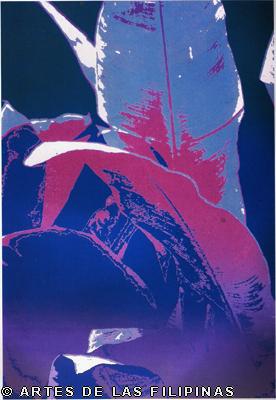
Helyconia’s Offering
1993
Whose style are you drawn to painting during your student years?
Carlos Valino. He was my teacher in drawing studies and he was one of those teachers that demonstrated and showed us his works. Jose Joya also because he was also my teacher and I was interested in his compositions. There was also Botong Francisco whose mural I used to see at my godfather’s office.
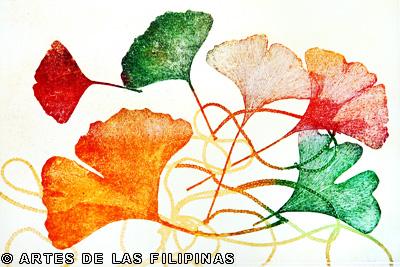
Gingko 1
1997
What about foreign influences?
I was drawn to the paintings of Claude Monet, Paul Cezanne. We had limited art books and I didn’t go to museums at that time.
My first job after graduating was giving private art lessons to children and adults alike. Shortly after, I got a teaching job at Assumption Convent in Herran Street in Manila in1968.
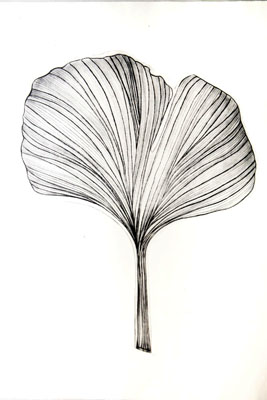
Gingko 2
1997
After this stint, did you have another job?
My next full time job was as an art teacher at the International School Manila. At that time, the school was in Makati. The class hours at the International School were 7:15 am – 12:30 pm for special subject teachers. So I also kept the part time job at Assumption Convent for a few more years, teaching from 1:30 – 3:30 pm. On weekends, I gave private art lessons.
Who were your students at that time?
I gave private art lessons to the Consunji, Orosa and Donato children. I also gave some art lessons to Myrna Sunico, who is now the Executive Dircetor of Product Development and Design Center of the Philippines. When I was an art teacher at Assumption Convent Herran, Maria Lourdes Heras-de Leon, now the President of the Ayala Foundation, was in my art class.
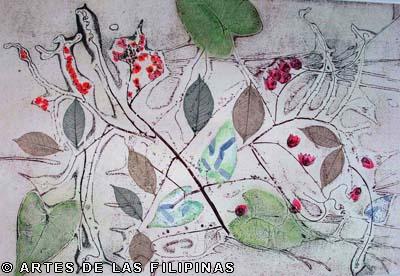
Cadena de Amor
2007
You first entered the art scene in 1968. What was the status of the art scene during those times?
Most of the Fine Arts students during my time majored in Advertising and Editorial design and that’s where I ended up. I learned and enjoyed doing lettering, layout designs and silkscreening. My paintings in college were more to fulfill the requirements to graduate.I did not come from a family of artists. Most family members are lawyers but at the first sign that I was interested in art, my parents encouraged me to take it up.
Looking back, I think that coming from a very sheltered home and school, I was very careful and private. I was also not aware of the different art contests during our student days. Only the boys were joining and winning the prizes. I don’t remember any of us girls joining the Shell contest or anything.I was doing my art for myself and my family. The other students around me were drawing fast and came out with outstanding drawings. There was also much teasing so I didn’t want to exhibit my finished work.The art exhibits I saw were more of realistic paintings. My classmates who drew well were the ones who exhibited and we attended their exhibits.
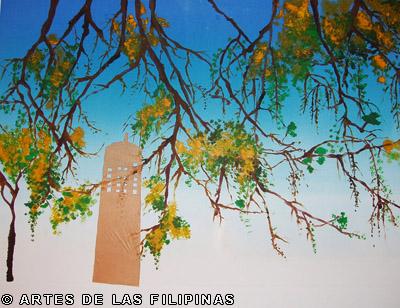
Carillon
2007
I know that my classmates were actively exhibiting. However, the opportunities to be recognized were limited as the art patrons at that time were primarily focused on collecting the works of known Filipino masters. Personally, I was also shy and was not ready to exhibit my work at that time. I had many classmates who were award winners which I was insecure about joining art contests and shows. When I became an art teacher, I got more involved as an officer at the Philippine Art Educators Association (PAEA) led by Cheloy Dans, Brenda Fajardo and Cota Yabut. I was invited to join a group show with Tessie San Juan and I joined this because she asked me to exhibit my tie dye artworks.
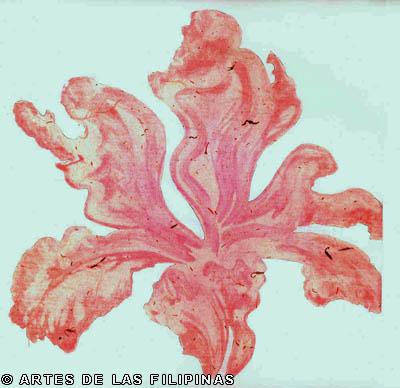
Evocations 1
2007
When did you start using tie dye?
I used the tie dye technique in a new way around 1973–1974. I used different cloths, a variety of strings and rubber bands to create the designs.
My first exhibit was at the Philippine Center in New York.By this time, I had already attended the School of Visual Arts. I matured and acquired a good amount of self confidence necessary in exhibiting my work. I was also going around with professional artists who were not just drawing but doing modern and conceptual works. They respect each artist’s work for what it is. I also invited another friend to show her paintings because I was teaching full time and I was not sure I can take care of the exhibit. At this time, I was focused on printmaking so I exhibited etchings and serigraphs.
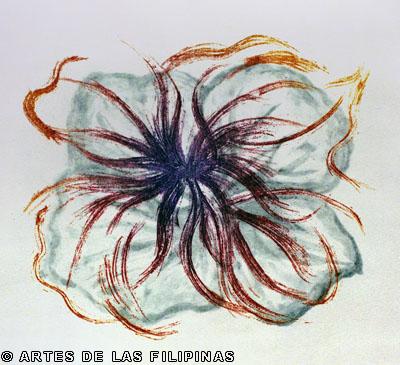
Evocations 2 and 3
2007
What was the first gallery that carried your works?
Paul Sharpe Contemporary Art in New York.
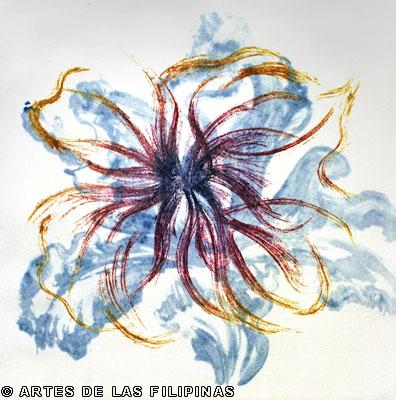
Evocations 1 and 3
2007
For the ideas of your own exhibitions, how do you try to be different in concepts and executions?
In 1990, computer-generated designs was at its infancy. At the School of Visual Art where I was enrolled, I was in the first batch that took courses in this new technique. Naturally, therefore, my first exhibit was mostly computer-generated designs executed in traditional etchings and serigraphs medium.
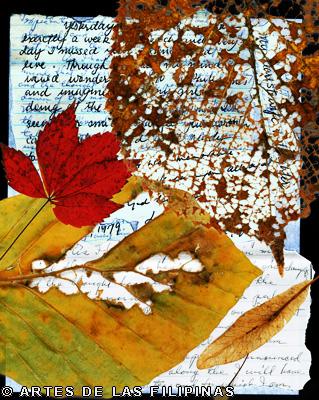
Cherished Memories
2008
Firstly, I have my critical self in mind.Secondly, since I was teaching at the United Nations International School, the immediate viewers I have in mind are my colleagues, the parents and the UN community. In general, my aim is always to be able to project the best of the Filipino and the Philippines in all my work.
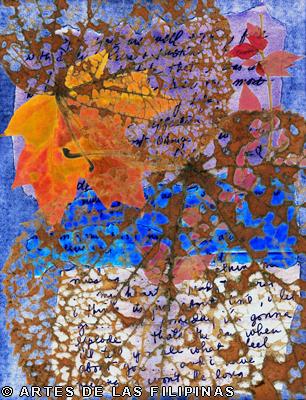
Love Letters
2008
There is no gender in my artwork.
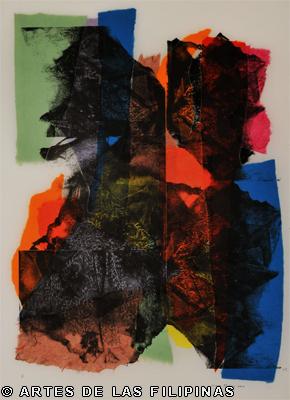
Panuelos
2010
Change requires many people to alter comfortable routines, to rethink paradigms, to try new ways of doing things. Constant evolution is one of the few undeniable truths in life. One has to be honest with oneself in doing art. I have to create art that is fulfilling and a gift to be shared. In collaborating with advocacy groups, I can become a social advocate when designing and implementing art projects depicting these causes. I can stimulate critical thinking which gives me a sense of social responsibility.
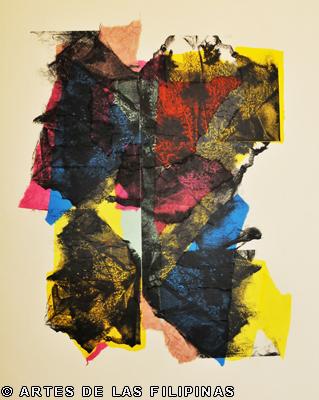
Panuelos 1
2010
Being an immigrant in Vancouver and New York, I always think of my motherland. A serious illness caused me to reconsider the significance of my art. I did a lot of introspection.
Are there other themes that pervade your works?
My other themes are nature, environment, women, comfort women, women’s attire during the Spanish time – my motherland, family. I revisit these earlier themes from time to time.
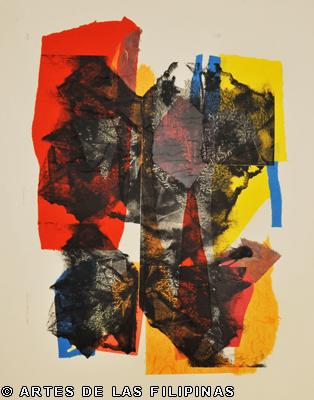
Panuelos 3
2010
I also do oil, watercolor, pastel, mixed media, installations and mobiles.
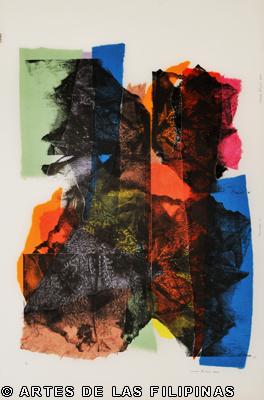
Saya 1
2010
Do you have your own printing press at home to work on your prints?
I go to the Robert Blackburn Printmaking Workshop in New York. For large works and editions, I work with Devraj Dacoji, master printmaker from India. When I am in the Philippines, I go to the Philippine Association of Printmakers studio at the Cultural Center of the Philippines. I have an 18” Epson printer in my art room in Harlem, New York where I can print artworks up to 17” in width. For large ink jet works, they are printed by Paul Plaine of Plaine and Chamberlain in New York when I have an art exhibit in the US and Ross Capili of Galerie One Workshop in Makati when I have an exhibit in the Philippines.
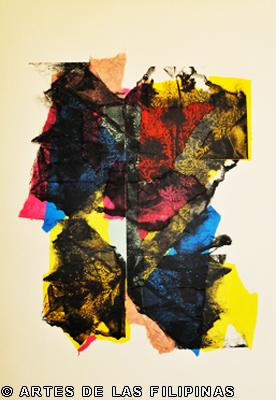
Saya 2
2010
My themes of flora, decaying leaves and nostalgic lacework. My works have softness of colors and clean and delicate lines.My works emerge in prints of lace, veils, textiles with variations in tones and expressions.It is my composition of ideas that makes my art distinct.
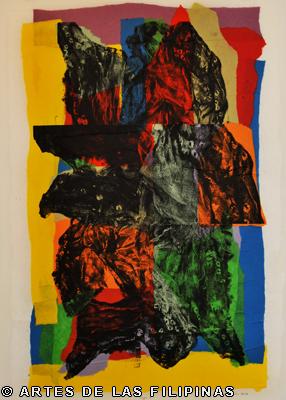
Saya 3
The themes of flora, decaying leaves and nostalgic lacework, what inspired you to do these?
I build on past works. I started to use decaying leaves in 1990 to express my advocacy for the conservation of nature. I wanted to show the awesome workings of nature. I used the nostalgic lacework theme also during this time to celebrate the Philippines’ maternal tradition. I wanted to focus on Filipino women’s stature in the twenty-first century.
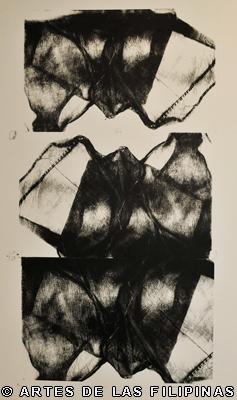
Baro’t Saya
2010
Yes. Robert Blackburn Printmaking Workshop in New York, Philippine Association of Printmakers in the Philippines, Society of Philippine American Artists in New York and the Waterside Artists in New York.
What do you think are the advantages of being part of an artist’s group?
By belonging to an artist’s group, we can help each other, exchange ideas, exhibit together and grow professionally.

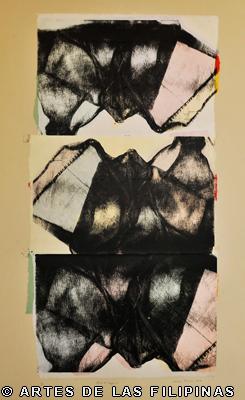
Baro’t Saya 2
2010
When I’m part of an artist group, I tend to get heavily involved in the overall management and organization of the group and its year-round activities of art exhibits, artist talks and public relations. This can take much of my time away from doing my own art.
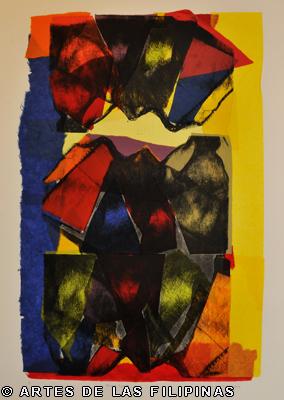
Baro’t Saya 3
2010
100 Most Influential Filipina Women in the US Innovators & Thought Category Berkeley, California (2009)
Outstanding Professional Awardee for Fine Arts, University of the Philippines Alumni Association (2007)
Pamanang Pilipino Award, Presidential Awards for Filipino Individuals and Organizations Overseas (2004)
Grant by Pollock-Krasner Foundation, New York (1999)
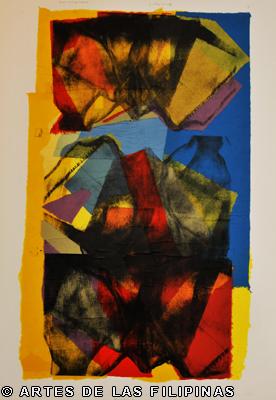
Baro’t Saya 4
2010
It might take longer to become commercially successful without any award. If an artist is patient and shows work continuously, word will get around of how good and serious the artist is. Eventually, an organization will honor the artist. In college, I did not join any contest and had no awards. I just started to receive art awards in 1998.
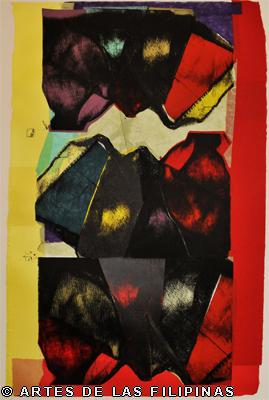
Baro’t Saya 5
2010
Who handles the business side of your profession?
I handle this myself.
What are the factors that you consider in pricing your work?
The edition, size and materials used. The time involved and studio support to create the work are also considered. The value of the artwork depends on many factors: the artist’s credentials, the number of edition and the condition of the artwork. A monoprint can command the same price or more than an oil painting if the work is done by an artist with good credentials.

Alaala 1
2010
What is your view on the general impression that a work on paper is lesser in value than works done in oil?
Here in New York, works on paper is as valuable as works done in oil. There are many museums and galleries, ongoing print exhibitions, annual Print Fairs and there are many printmaking workshops in the city. People are more informed of the techniques of printmaking and thus understand the value of works on paper.
How then should the viewers perceive works on paper?
Works on paper is a respected artwork. Works on paper is varied and exciting.
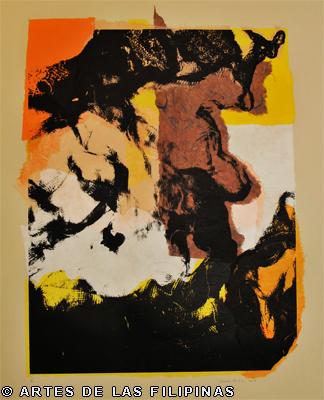
Alaala 2
2010
Since I was a teacher for eighteen years at the United Nations International School (UNIS), my collectors are from the international community. When I have my art exhibits, the UNIS community is invited.I have also been an active volunteer in the Philippine Consulate in NY and I met many Filipinos who live in New York. They also collect my works.
On my last visit to Manila, I was contacted by a friend who asked if his friend, a curator, can acquire the artwork,My Mother’s Veil. When I met this curator to bring the artwork, he said he saw this in my art exhibit last 2008 and since then he has been dreaming and thinking about it.He said he likes the delicate lines, composition and variation of tones.
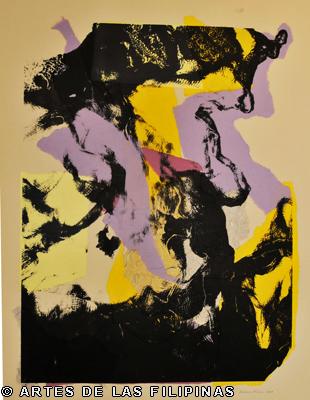
Lotus Leaf
2010
The only thing I can think of is that most of my works are on paper and it’s hard to take care of them especially in the Philippines because of the high humidity weather.
Works of art on paper should be touched as little as possible. Hands should be clean or white cotton gloves should be worn. It’s better to store the artwork framed or matted. Mats and folders must be acid-free. The artwork should be protected from unsafe temperature, pollutants and airborne particulates.
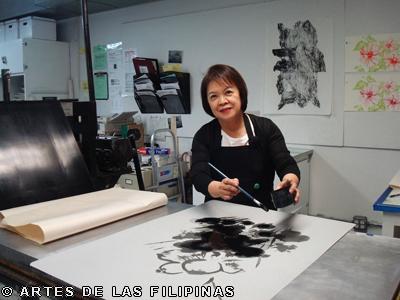
Tell me about your early life and education.
My father, Arsenio, was a lawyer and have worked for the Department of Justice as Special Prosecutor. He died in 1975 at the age of 65.My mother, Ella, was also a lawyer and worked for the Senate until Martial Law was declared and the institution was abolished.She is from Taal, Batangas and she passed away at the age of ninety-two last 2007. My brother Armand was a bankerand is a business consultant at present. I have another brother, Francis, who is a lawyer and a legal counsel to a number of business organizations.Lynn, my sister, is in the food catering services in the Philippines. She is married to Rene Sunico, past president and now consultant of La Farge, a French cement company in the Philippines.
I’m married to Jose Lim, a Manhattan realtor. His father, Antonio Lim, was in the diplomatic service. He grew up and studied mostly outside the Philippines, having lived with his parents when they were assigned to Pakistan, Korea, Egypt and Italy. He graduated from the American University in Cairo, Egypt.I was teaching at the International School Manila at the time I met my husband who was visiting Marinduque to attend the Moriones Festival. Although his parents were both from the province, he was attending the festival for the first time. We were introduced by an aunt who is married to a distant relative of my husband.
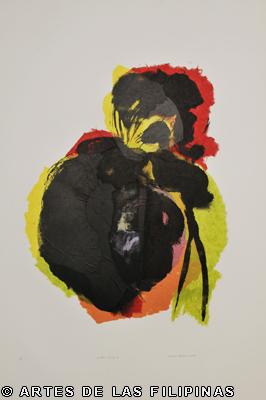
Lotus Leaf
2010
Are you the eldest in your family?
I am the third child in the family.
I studied at the College of the Holy Spirit in Mendiola, Manila from Grade 1 to high school. The school helped in my values formation and working towards excellence.The virtues of truth and charity were instilled in me. In high school, Sr. Araceli gave me free art lessons on Saturday mornings and this encouraged me to study Fine Arts.
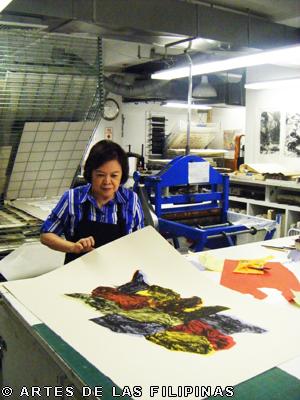
Lenore at the RPW Studio
What are some of your fond memories of your childhood in the Philippines?
Christmas season. In preparation for Christmas, I would decorate our house and would make presents for my family and friends. We always had a reunion at my Lola’s house in Makati. During this time, I visit my Ninong and Ninang for my aguinaldo. Summer vacation. Every summer vacation, I would spend two weeks in my Lola’s house in Makati. A few blocks from her place was the local fair and our yaya would take us there everyday after dinner. Our cousins lived a few blocks away and we get to see them everyday.
Have you always liked art?
When I was growing up, I enjoyed drawing and copying the pictures in books. When I submitted an assignment, I would add pictures or borders and decorate the front page.Whenever there was a celebration at home, I would decorate our place. We would order a plain cake and decorate the cake myself. At family weddings, I would decorate the church and the reception place. An aunt of mine, Elma OrosaParaiso, stayed with us while reviewing for her board exams and she was artistic. She showed me how to make paper flowers and decorate.When I was teaching at the International School of Manila, I also went around with an interior decorator Betty Rodriguez and learned some interior decorating tips from her.
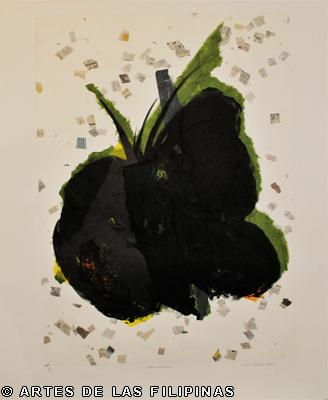
Metamorphosis 2
2010
When did you retire from teaching at the International School Manila? What subjects were you teaching then?
I was an art teacher at the International School Manila from 1968 – 1975.
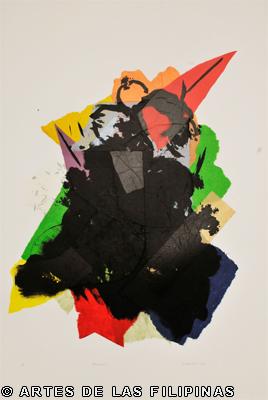
Blossoms 3
2010
My husband and I left the Philippines in 1975 during Martial Law. I was an exchange teacher in Mobile Alabama. From Mobile, Alabama, we migrated to Vancouver, BC, Canada and started our family there. We lived in Vancouver, Canada from 1975 – 1988. In September 1988, we moved to New York.
What, if any, were the adjustments you had to make as a Filipino artist working abroad?
I was more of an art teacher when I was in the Philippines before I left for Mobile and Vancouver. I did commissioned works for colleagues at the International School and for friends’ homes.
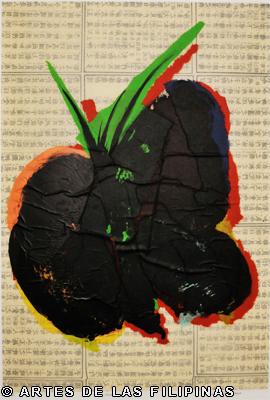
Metamorphosis 3
2010
How did you re-establish your artistic career in America?
Actually, it was only when I moved to New York that I seriously began my artistic career. It was at the exhibition in 1991 of “Seven Printmakers” at the Museum of Modern Art that I discovered that printmaking is what I really want to do. I related most to the works of Robert Rauschenberg.
Is it safe to say that it was only in 1991 that you formally began your career as a printmaker?
Yes. Before this time, my medium was watercolor, oil and acrylic.
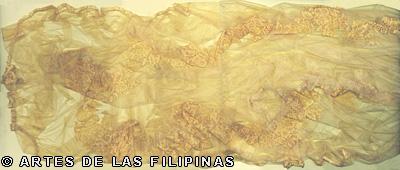
Ella’s Veil
2011
How do you get updated on the Manila Art scene?
I come home to the Philippines every year. When I am abroad, I meet with my artist friends and do workshops in printmaking. I attend art openings where I meet other artists.I have also been doing free workshops for the University of the Philippines College of Fine Arts and at the Philippine Association of Printmakers (PAP). Through the artists from UP and PAP, I get updated on the art scene.
Coming to the Philippines at least once a year, what are the changes have you observed in the local art scene?
In the last six years, I noticed a big change. The art scene is alive and well. There are many art galleries that have moved to new and bigger locations. The galleries are showing more contemporary works and are focusing on young artists.The Internet and globalization have contributed to having more old and new collectors purchasing art pieces by masters and young established artists.
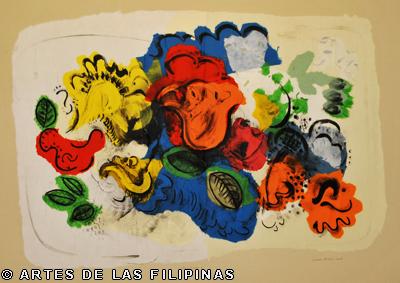
Simple Abundance
2011
You have exhibited in Austria, Canada, France, Iraq, Italy, Japan, Jordan, the Philippines, Peru, theUnited Arab Emirates and the United States. How different or similar is it to exhibit in these countries?
It’s more difficult to exhibit in another country because of the cost and complexities involved in shipping the works. Furthermore, you need to get sponsors and hosts who may not always be prepared for the unexpected and other contingencies of an art exhibit. You also have very little control over the audience that you will have.
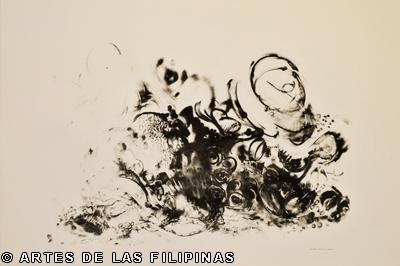
Simple Abundance A
2011
What do you think is the best audience to have during art exhibitions?
A good mix of guests is good to have including family, friends and collectors. An artist has to be ready with a guest list and press releases. The Internet is helpful for sending email announcements and press releases without spending too much. Recently, Facebook has been another way of updating friends and announcing coming exhibits.
Which exhibit do you consider memorable?
My art exhibit in Abu Dhabi.I was invited by the Abu Dhabi Cultural Foundation. They provided the hotel accommodations and the reception for the art exhibit opening. The Philippine Ambassador was very helpful and my family was able to attend that exhibit. Abu Dhabi has a lot of Overseas Filipino Workers and it’s good for the Philippines to be featured in the Abu Dhabi Cultural Center. I was featured in their national magazine and got good press coverage.
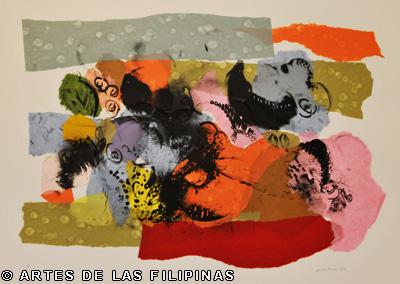
Simple Abundance 1
2011
Let’s say you are still based in Manila, how do you think your career would have fared by now?
You have been around the art industry for quite some time, do you still get insecure at this point in your career?
No. My work speaks for itself and it reflects my own unique personal experiences.
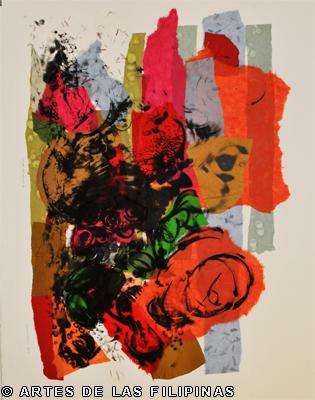
Simple Abundance 1
2011
What should your followers expect from you in the next five years?
I was the first printmaker to have a solo exhibit, Computer Art Photoetching and Serigraphy, in the Philippines at the Ayala Museum in 1991. In the foreword from Profound Afterglow: The Prints of Lenore RS Lim, Agnes Gund, Chairman and President Emerita of The Museum of Modern Art, New York wrote:
“Her work made an immediate impression upon me, much as the printmaking process makes an indelible impression on the paper. Her work stays with you, brings you strength and beauty, and also challenges us to think again about printmakers and their rightful place in the art canon at the beginning of this new millennia.”




